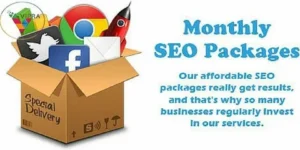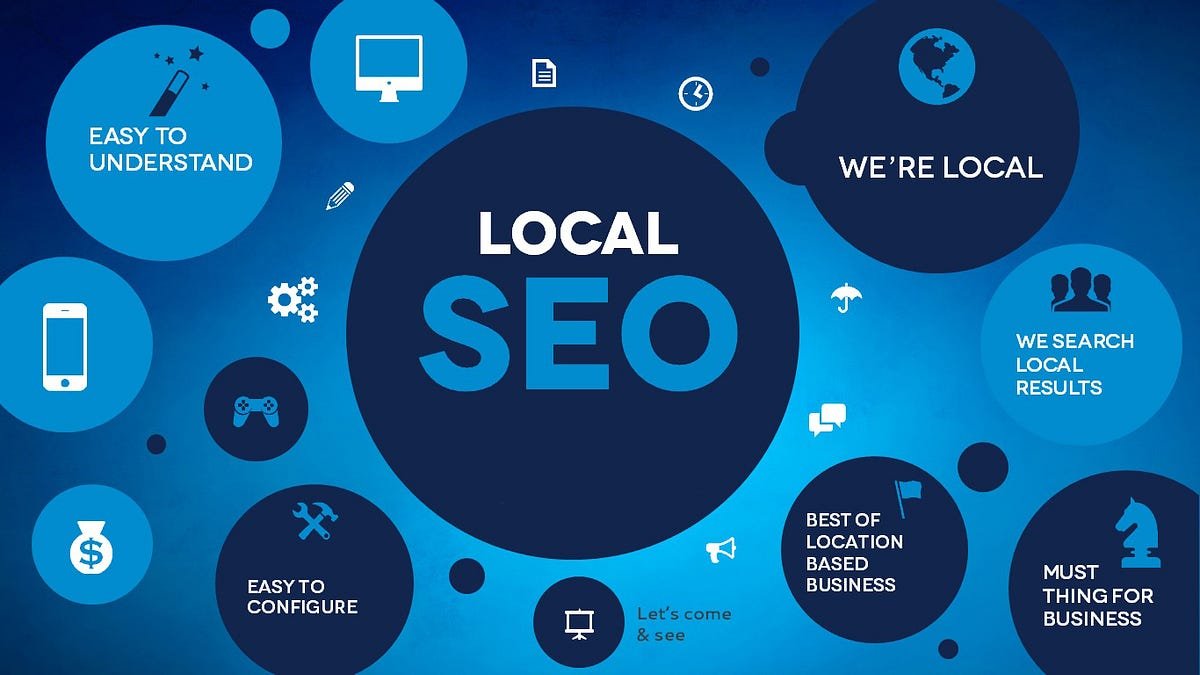Introduction
In the highly competitive restaurant industry, with over a million establishments in the USA, standing out locally is critical for attracting diners. Local Search Engine Optimization (SEO) ensures that restaurants appear in search results when potential customers look for dining options nearby, such as “best Italian restaurant near me.” However, many restaurants, especially small or independent ones, struggle to afford comprehensive SEO services. This guide breaks down the problem of finding affordable local SEO packages, identifies common challenges, outlines consequences of inaction, and provides actionable solutions with real-world examples to boost online visibility cost-effectively.
Breaking Down the Problem
The challenge of securing affordable local SEO packages for restaurants can be divided into smaller components:
-
High Costs of Professional SEO Services: Many SEO agencies charge $500–$2,000 per month for comprehensive services, which may be out of reach for small restaurants with limited budgets.
-
Lack of Knowledge or Resources: Restaurant owners often lack the time or expertise to implement SEO strategies themselves, leading to reliance on external agencies.
-
Ineffective Cheap SEO Packages: Low-cost SEO services (e.g., $99/month) often lack customization, focusing only on basic keyword optimization without a holistic strategy, resulting in poor outcomes.
-
Keeping Up with Algorithm Changes: Google’s algorithms frequently update, prioritizing factors like mobile-friendliness, user experience, and local relevance, which requires ongoing effort to maintain rankings.
-
Competitive Local Market: Restaurants compete intensely for the top spots in Google’s Local 3-Pack, where 64% of consumers click, making visibility critical.
Common Causes
-
Budget Constraints: Small restaurants often prioritize operational costs (e.g., staff, ingredients) over marketing, limiting SEO investment.
-
Generic SEO Approaches: Many affordable packages use one-size-fits-all strategies that fail to address the unique needs of restaurants, such as local keyword targeting or menu optimization.
-
Neglecting Google Business Profile (GBP): An unoptimized or outdated GBP reduces visibility in local searches and Google Maps.
-
Limited Online Presence: Inconsistent Name, Address, Phone Number (NAP) across directories or a lack of backlinks weakens SEO performance.
-
Low Review Volume: Restaurants with few or no reviews struggle to build trust and rank higher, as Google favors businesses with active customer engagement.
Consequences of Not Addressing the Issue
Failing to invest in affordable, effective local SEO can have significant repercussions:
-
Lost Customers: If a restaurant doesn’t appear in the Local 3-Pack or top search results, competitors capture potential diners, as 84% of consumers use search engines to find local restaurants.
-
Reduced Revenue: Poor online visibility leads to fewer reservations, online orders, and walk-ins, with studies showing SEO can boost revenue by 15–20%.
-
Brand Obscurity: Without a strong online presence, restaurants miss opportunities to build brand awareness and customer loyalty.
-
Wasted Marketing Budget: Investing in ineffective, cheap SEO packages results in little to no return on investment (ROI), draining resources.
Actionable Step-by-Step Solutions

Below is a comprehensive, budget-friendly approach to implementing local SEO for restaurants, combining DIY strategies and affordable professional services.
Step 1: Optimize Your Google Business Profile (GBP)
Why: GBP is the cornerstone of local SEO, driving visibility in Google Maps and the Local 3-Pack. It’s free and has a significant impact, with profiles receiving seven times more views than restaurant websites.
How:
-
Claim and Verify: Visit Google Business Profile to claim your listing. Verify ownership via phone, email, or postcard.
-
Complete All Fields: Fill out every section, including name, address, phone number (NAP), hours, categories (e.g., “Italian Restaurant”), and attributes (e.g., “outdoor seating”).
-
Add High-Quality Photos: Upload images of your restaurant’s interior, exterior, and popular dishes. Google recommends 720×720 pixel images, 10 KB–5 MB in size.
-
Post Regularly: Use GBP Posts to share updates (e.g., new menu items, events) weekly to signal activity to Google.
-
Encourage Reviews: Ask customers to leave reviews via a QR code on receipts or tables linking to your GBP. Respond to all reviews to show engagement.
Tools: Free Google Business Profile; Canva for creating visuals.
Example: Puesto in San Diego optimized its GBP with high-quality photos and regular posts about community events, boosting local visibility through its “Puesto Cares” initiative.
Step 2: Ensure Consistent NAP Across Directories
Why: Consistent NAP across online directories builds trust with search engines, improving rankings. Inconsistent information confuses Google and customers.
How:
-
Audit Existing Listings: Check platforms like Yelp, TripAdvisor, and OpenTable for NAP accuracy.
-
Update Listings: Correct any discrepancies manually or use tools like Moz Local or BrightLocal ($29–$79/month) to automate updates across directories.
-
Submit to Local Directories: Add your restaurant to local business directories, food blogs, or community boards for backlinks and citations.
Tools: Moz Local (affordable plans start at $14/month); BrightLocal; Yext (free trial available).
Example: Dock Street Brewery in Philadelphia used BrightLocal to ensure consistent NAP across 50+ directories, improving its Local 3-Pack ranking within six months.
Step 3: Conduct Keyword Research and Optimize Website
Why: Targeting local keywords (e.g., “pizza restaurant Chicago”) ensures your website ranks for relevant searches, driving organic traffic.
How:
-
Identify Keywords: Use free tools like Google Keyword Planner or Ubersuggest to find high-volume, low-competition keywords specific to your cuisine and location.
-
Optimize On-Page Elements: Include keywords naturally in page titles, meta descriptions, headers, and menu descriptions. Avoid keyword stuffing, which Google penalizes.
-
Mobile-Friendly Design: Ensure your website is responsive, as 90% of diners search on mobile devices. Test with Google’s Mobile-Friendly Test tool.
-
Add Local Content: Create pages or blog posts about local events, awards, or community involvement to boost relevance.
Tools: Google Keyword Planner (free); Ubersuggest (free tier available); Squarespace or Wix for affordable website building ($16–$27/month).
Example: Doo-Dah Diner used Owner.com’s website builder to optimize for local keywords, achieving a top-five Google ranking and $7,000/month in online sales.
Step 4: Build High-Quality Backlinks
Why: Backlinks from reputable local sites signal authority to Google, improving rankings. Restaurants with more backlinks often outrank competitors.
How:
-
Partner with Local Organizations: Sponsor local events, charities, or sports teams and request a link to your website.
-
Engage with Media: Pitch stories to local newspapers or food blogs for features that include backlinks.
-
Create Shareable Content: Publish blog posts, videos, or infographics (e.g., “Top 5 Dishes to Try in [City]”) that other sites may link to.
Tools: Canva (free) for visuals; HARO (Help A Reporter Out) for media outreach.
Example: A pizzeria in Lewiston, Maine, secured 250 backlinks through community partnerships, outranking a competitor with only five backlinks.
Step 5: Leverage Reviews and Social Proof
Why: Reviews influence 82% of diners and boost local rankings. Google favors restaurants with high review volume and ratings.
How:
-
Prompt Reviews: Place QR codes on menus or receipts linking to GBP or Yelp. Offer incentives like a free dessert for reviews (check platform policies).
-
Respond to Reviews: Reply to all reviews professionally, addressing negative feedback constructively.
-
Showcase Reviews: Embed positive reviews on your website or share them on social media.
Tools: QR Code Generator (free); Semrush’s Review Management ($40/month add-on).
Step 6: Monitor and Adjust with Analytics
Why: Tracking performance helps identify what works and where improvements are needed, ensuring cost-effective efforts.
How:
-
Set Up Analytics: Use Google Analytics and Google Search Console (both free) to monitor traffic, keyword rankings, and user behavior.
-
Track Local Rankings: Use Semrush’s Map Rank Tracker ($10/month add-on) to monitor Local 3-Pack rankings.
-
Adjust Strategy: Review monthly reports to refine keywords, content, or GBP updates based on performance.
Tools: Google Analytics (free); Google Search Console (free); Semrush (free trial).
Case Study: Real-World Success
Case Study: Icecube Digital and a Local CaféA small café in Seattle struggled with low online visibility and relied on foot traffic. Icecube Digital implemented an affordable SEO package ($500/month) that included GBP optimization, local keyword targeting, and backlink building through partnerships with local food blogs. Within six months, the café ranked in the Local 3-Pack for “best coffee shop Seattle,” increasing reservations by 40% and boosting monthly revenue by 18%. The café maintained these results by continuing GBP updates and posting weekly blog content.
Preventing Future Issues
-
Regular Updates: Update GBP and website content monthly to reflect new menus, hours, or events.
-
Stay Informed: Follow SEO blogs like Moz or Semrush for updates on Google algorithm changes.
-
Engage Locally: Continuously seek community partnerships to maintain backlinks and local relevance.
-
Budget Wisely: Allocate a small monthly budget ($100–$300) for tools or low-cost agency services to sustain efforts without breaking the bank.
Next Steps and Call to Action
To boost your restaurant’s visibility and attract more local diners, take these immediate steps:
-
Claim and Optimize Your GBP: Spend 30 minutes today setting up or updating your Google Business Profile.
-
Audit Your NAP: Use Moz Local or manual checks to ensure consistency across directories within a week.
-
Start Keyword Research: Use Google Keyword Planner to identify five local keywords to target this month.
-
Engage Customers: Implement a review strategy by creating QR codes for your next service shift.
-
Consider Affordable Services: If DIY feels overwhelming, contact agencies like Revenue Boomers or Media Search Group for free SEO audits and budget-friendly packages starting at $399/month.
Call to Action: Don’t let competitors steal your customers. Start optimizing your local SEO today to fill your tables and grow your revenue. Visit Google Business Profile to claim your listing or contact a trusted SEO agency for a free consultation. Act now to ensure your restaurant thrives in the digital age!
